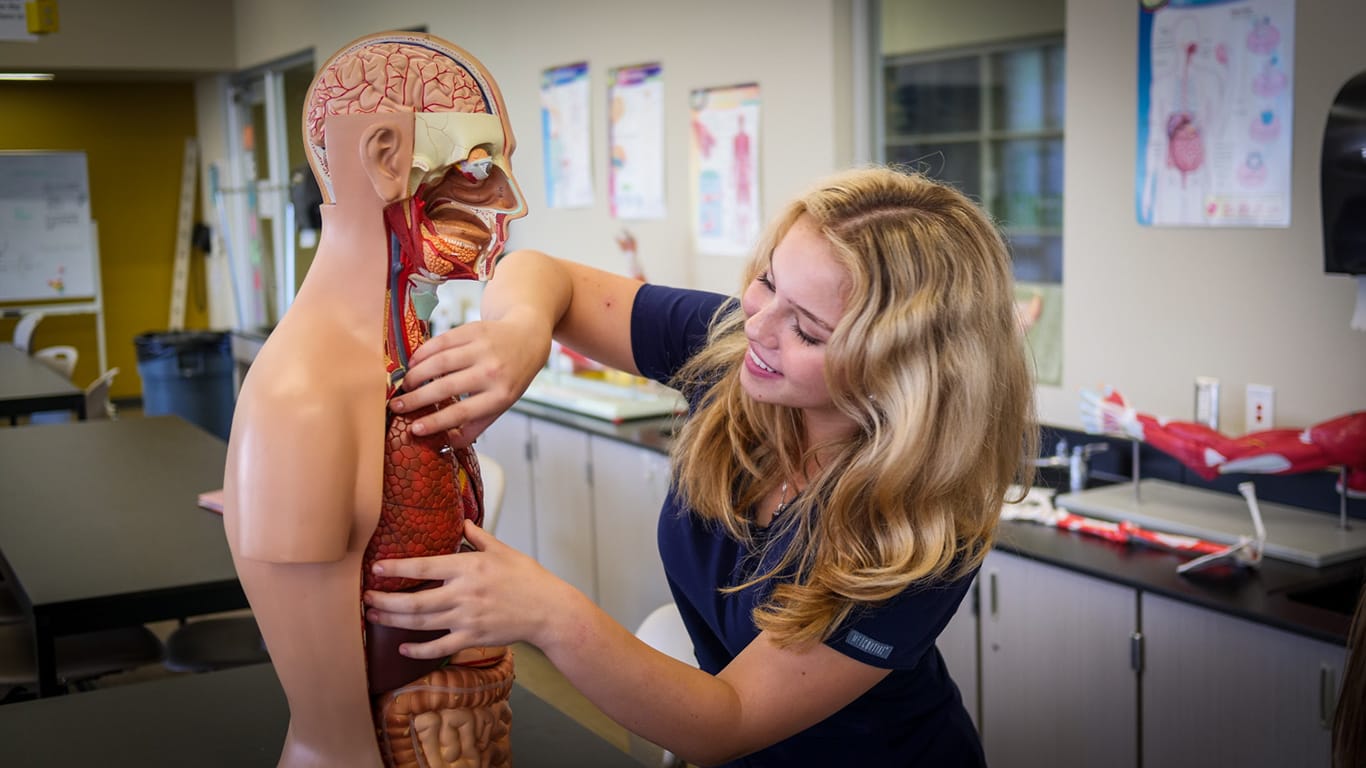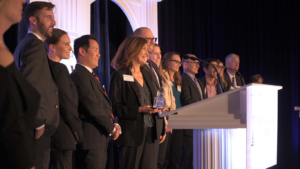In case you missed it, the best high school in the country is in the West Valley.
Out of nearly 25,000 school assessed by U.S. News & World Report for its 2024 rankings, BASIS Peoria, which opened in 2011 and serves middle school and high school students, was ranked No. 1 in the nation.
DEEPER DIVE: How the West Valley evolved into hotbed for innovation and growth
MORE NEWS: 3 Arizona high schools earn Top 5 spots in the best high schools rankings
“It’s an incredible campus,” says BASIS Educational Ventures Co-Chairman Patti Bezanson. “BASIS Peoria does great things; that’s always been the case. This year, those great things were better than any other campus in America.”
But BASIS Peoria isn’t the only West Valley educational institution doing great things and impacting students and the community. The West Valley education ecosystem is fostering innovation in education by embracing technology, personalized learning and hands-on experiences to fundamentally change the way students are prepared to enter the workforce. By integrating cutting-edge tools and methodologies, West Valley educators are empowering students to think critically, problem-solve creatively and adapt to a rapidly evolving world. And, in doing so, they are creating a skilled and adaptable future workforce for employers looking to relocate or expand in the West Valley.
“The West Valley’s greatest strength is the rapid growth of companies that are seeking a skilled workforce and the wide range of incoming talent to feed this pipeline,” says Dr. Scott Spurgeon, superintendent at West-MEC, a public school district that provides innovative Career and Technical Education (CTE) programs. “Countless businesses are establishing operations in the West Valley as they realize the potential of our geographic footprint.”
Next school year, Spurgeon says West-MEC will train students in 33 programs that are in the fields of architecture and construction; health science; human services; information technology; law and public safety; manufacturing; STEM; and transportation, distribution and logistics. In case you missed the headlines: Those are all business sectors the are growing and fluorishing in the West Valley.
“As businesses build strategic partnerships with educational districts like West-MEC,” Spurgeon says, “this will foster student career pathway opportunities and move them toward economic independence.”
West Valley schools prepare for the future
Experts say the West Valley’s greatest strength in building the workforce of the future lies in its commitment to meeting the needs of its growing population head-on.
“Our Arizona-based, hybrid, 24-month Master of Physician Assistant Studies (MPAS) program is designed to prepare PAs to provide compassionate care with the highest level of clinical excellence and ethical standards,” says Mable Smith, Ph.D., JD, MN, NEA-BC, interim dean, College of Health & Natural Sciences at Franklin Pierce University, which has a campus in Goodyear. “We develop PAs who are patient advocates, critical thinkers and lifelong learners. We nurture the development of culturally sensitive leaders who embrace diversity, equity and inclusion to serve patients within their communities, where they are ideally positioned to meet local employers’ needs and contribute to regional healthcare services.”
Being able to meet those employers’ demands is critical to both the future success of students and the continued economic growth of the West Valley.
“Grand Canyon University prepares students for the workforce by creating educational opportunities that meet the needs of the student and industry leaders,” says Paul Lambertson, dean of GCU’s College of Engineering and Technology. “The university continually assesses the economy and partners with more than 500 industry leaders on our advisory boards to align our curriculum to meet their needs.”
As part of that effort, GCU launched the Center for Workforce Development, which encompasses the university’s Pre-Apprenticeship for Electricians and a new Computer Numerical Control (CNC) Machinist Pathway.
“This accelerated pathway model is making an impact on the state by helping high-demand industries fill needed positions while also adapting to today’s student and leading them to life-changing careers,” Lambertson says.
The goal is a career
Making sure West Valley students are on that fast track to lucrative careers marks a shift from the traditional approach of education institutions.
“Going back years ago, educators developed their curriculum and marketed that curriculum to students and then those students graduated with a lot of debt and maybe a job, maybe not a job,” says Sintra Hoffman, president and CEO of WESTMARC. “That approach has dramatically changed. As part of West Valley Pipeline, which is our workforce development strategy, we bring in industry partners and education partners and they are able to have a dialogue and say, ‘This is what I needed in terms of skill set and education.’”
Hoffman says educators have stepped up, listened to the needs of employers, looked at job descriptions and started working from skill-based needs to figure out their education programs and shape their curriculum.
“Glendale Community College has renewed its focus on meeting the needs of the West Valley,” says Tiffany Hernandez, PhD, JD, president of Glendale Community College. “We are achieving this by being agile and listening to our business partners, students and our community. In working alongside these groups, GCC is putting greater focus on post-completion success and job placement. Just as our students learn from us, we are constantly learning from our workforce partners to understand what skills are needed for employees to thrive in their positions and businesses to be successful.”
But innovative West Valley educators aren’t waiting until students get older to put them on a prosperous career path.
At the Agua Fria High School District, educators and local businesses are teaming up to help students pave a pathway to success from early on. Agua Fria’s “Academies” provide robust, tailored academic experiences for students to explore high-wage, in-demand careers and understand the education, training and credentials needed to meet their career and college goals. Through partnerships with local businesses and aligning core classes like algebra, English, arts and history with workforce-focused experiences, students can apply classroom lessons with real-world expectations.
“The Academies will give every student extensive exposure to work-based learning that not only enriches their educational experience, but also strengthens the workforce of our cities, fostering economic growth and sustainability by cultivating a skilled and adaptable workforce,” says Trey Terry, Agua Fria governing board member. “Our close collaboration with local businesses ensures our curriculum reflects the current standard in the workplace and what’s expected in a collegiate setting.”
The future is now for West Valley schools
And back in Peoria, the Peoria Unified School District has taken a holistic approach to educating its students to prepare them to lead the future workforce.
“In addition to traditional academic skills, our CTE programs emphasize durable skills development such as problem-solving, collaboration, critical thinking and creativity, as well as character skills like fortitude, growth mindset and leadership,” says Superintendent KC Somers, PhD. “These skills will serve all Peoria Unified students well, regardless of what career pathway they choose. Students also have the opportunity to practice these durable skills and gain feedback from the industry, community and post-secondary stakeholders through project work, community service events, mock interviews, trials, role-plays and work-based learning engagements.”
Those types of experiences go a long way in helping both students and employers achieve their goals, according to Jessica Roper, director of career services at University of Phoenix.
“For early career job seekers, gaining hands-on experience alongside your education and certifications is key for building practical skills and enhancing your employability,” she says. “Part-time jobs, internships, volunteer experiences and personal projects are all great opportunities to apply your theoretical knowledge in real-world scenarios, helping you stand out to employers.”
What really stands out is the ability for West Valley business leaders and educators to continue to innovate to meet the needs of the future workforce.
“The West Valley is a tight-knit community that comes together regularly to support educational initiatives,” Somers says. “Volunteers offer assistance with mock interviews and classroom support, industry partners provide guest speaking for students and workshops for teachers, post-secondary partners offer students opportunities to begin earning college credits while still in high school, and community members participate in local events to help support student growth.”
Experts agree that collaboration between West Valley businesses and educators is key to preparing the workforce. By aligning curriculum with industry needs and providing internships and mentorship programs, students gain relevant skills. Businesses offer real-world insight to shape educational programs to foster innovation and practical expertise. Together, they bridge the gap between education and industry to build a skilled workforce. All that adds up to a region with a vibrant economic future, both for its employers and for the people who live there.
“Having business at the table will make a significant impact on the workforce pipeline in the Southwest Valley,” Hoffman says. “This will help propel the West Valley forward in a competitive fashion, attracting new businesses and creating excellent career opportunities for residents.”




